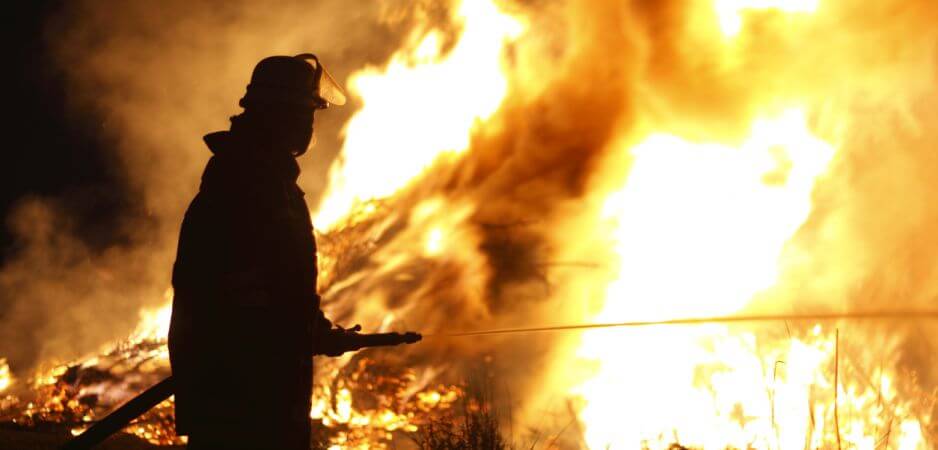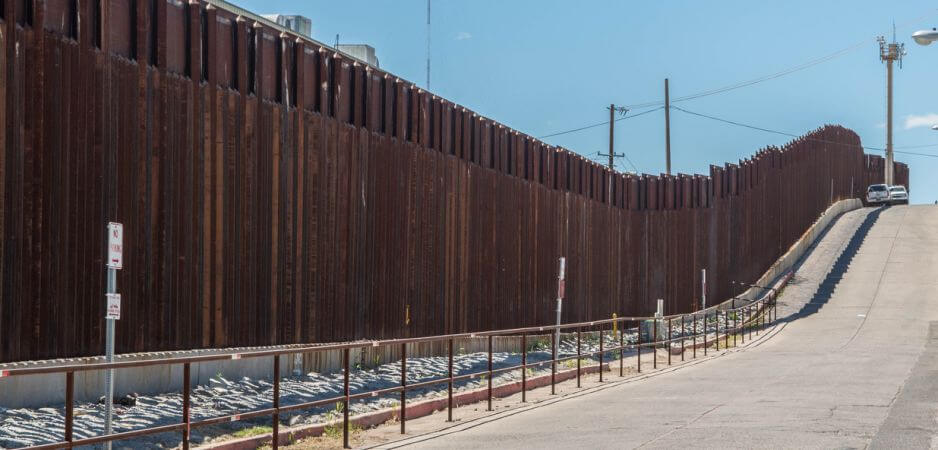Climate change, human activity and a blind embrace of markets are causing terrible wildfires in Chile as part of a global trend.
Even as Donald Trump continued to hog the headlines and Israel authorized 3,000 more settler homes in the West Bank, raging wildfires have been sweeping across central and southern Chile. They have caused the deaths of at least 11 people and destroyed more than 700,000 acres of forest. Over 5,000 square kilometers have been devastated. To put things in perspective, this is twice the size of Hong Kong and larger than Rhode Island.
So far, wildfires have razed entire towns and communities to the ground. Santa Olga was “the biggest of the several communities to be reduced to ashes in the Maule region.” A local elected official described the wildfire experience to be “literally like Dante’s Inferno.” Thousands of troops and firefighters have failed to douse the fires. Help from the United States, Russia, France, Portugal, Mexico and Colombia has not proved enough. President Michele Bachelet has ruefully admitted that Chile has “practically exhausted its capacity to fight the blaze.”
So, why are Chile’s wildfires so important?
First, they are the greatest forest disaster in Chile’s history. As the country lies south of the equator, this is summer season. Fires often break out in forests during this time of the year. According to the Food and Agriculture Organization (FAO), the number of fires in Chile has been increasing. The 1980s experienced an average of 4,800 fires per year. In the 1990s, this number was 5,530 per year, an increase of 13%. As per the FAO, the average area these fires damaged dropped from 11.3 to 9.1 hectares “due to improved strategies, organizational methods and co-operation among the firefighting partners.”
Fire fighting might have improved but the number of fires has been going up. In 2015-16, over 6,700 fires broke out in Chile, affecting more than 40,800 hectares. Any of these could have turned into a devastating conflagration. The rising number of fires should have served as a wakeup call but it seems that Chile did not quite get its act together in time. Not only has the country now lost lives and suffered billions of dollars of economic loss, but it has suffered enormous environmental damage that is irreversible and hard to quantify or measure. Hence Chile is experiencing what authorities are calling a “state of catastrophe” because of the worst wildfires in its history.
Second, the effect of these fires is being felt far away from Chile’s shores. The Earth Observatory of NASA has found that “far to the north and west, brown smoke hovers over marine clouds.” Tamsin Green from the MetDesk of The Guardian points out that the Midwest region of the US has been engulfed in a blanket of cloud. Many places have had average cloud cover of 100% for eight days straight from sunrise to sunset.
She explains that this phenomenon occurs because the jet stream air current plunges southward, allowing warmer, moist air from Chile to glide over the colder, snow-covered Midwest. This makes the air saturated, which then condenses to form banks of thick, low-lying cloud and advection fog. Apparently, this thick cover is not likely to disperse until the wind direction changes.
Third, Chile’s fires are part of a larger story. California’s wildfires are also spiraling out of control. In 2015, Chris Mooney of The Washington Post analyzed the “Rocky Fire” that burned thousands of acres in a year that was “ahead of pace for the number of fires and the number of acres burned.” He pointed out another important fact. The worst four forest fires have occurred from 2003 onward. Australia’s experience with wildfires is no different. Bushfires, as wildfires are called Down Under, have increased by 40% between 2008 and 2013.
In the October 31, 2015, edition of The World This Week, this author analyzed how a great tract of earth was on fire in Indonesia. These fires were disseminating more emissions per day than the US. They burned more than 2 million hectares (20,000 square kilometers) of forest and damaged the health of millions who lived in the area. Even the Amazon rainforest, the “lungs of the world,” is “increasingly vulnerable to catastrophic forest fires.”
Fourth, climate change is a key reason for the increasing frequency and size of wildfires. These fires are invariably caused by high temperatures, low humidity and strong winds. Extreme dry weather in the form of prolonged drought sets the state for catastrophic wildfires. Matt McGrath of the BBC reported on January 18 that 2016 has most likely edged 2015 as the world’s warmest year.
In 2016, Will Greenberg of Mother Jones reported that California’s forest fires had tripled in size. This tripling has occurred in large part due to prolonged drought conditions in the state. Drought dries out forests. Trees, shrubs and grass can be set ablaze by little more than a spark. Sadly, as per the Center for Climate and Energy Solutions, recent droughts in the US “have been the most expansive in decades.” It is little surprise that Bobby Magill of Climate Central argues that climate change’s fingerprints can be found all over California’s wildfires.
Australia is going through a similar crisis. In 2015, 86.1% of Queensland suffered drought, making it the “worst drought in living memory” in this Australian state. This drought succeeded another terrible one in 2006. Then, John Vidal, environment editor of The Guardian, reported that Australia was suffering the “worst drought in 1,000 years.” Many regions were in their fifth year of drought, reservoirs were dipping dangerously low, crops were failing and even drinking water was running scarce.
 India’s drought crisis puts Australia to shame. In 2016, the Indian government told the Supreme Court that 330 million people were suffering from drought. As temperatures in much of India rose above 40 degrees Celsius, many died from thirst. Crops failed, rivers turned into a trickle and reservoirs dropped to their lowest levels in a decade. The number of forest fires certainly increased from the average of 20,000 per year, although the data available is sparse and patchy.
India’s drought crisis puts Australia to shame. In 2016, the Indian government told the Supreme Court that 330 million people were suffering from drought. As temperatures in much of India rose above 40 degrees Celsius, many died from thirst. Crops failed, rivers turned into a trickle and reservoirs dropped to their lowest levels in a decade. The number of forest fires certainly increased from the average of 20,000 per year, although the data available is sparse and patchy.
Chile itself has been experiencing prolonged drought. In 2015, the government admitted that there was no end in sight to a drought that has plagued the country for several years. President Bachelet promised to “invest in desalinization plants and reservoirs to ensure access to potable water.” In 2016, the Southern Pacific Review reported that Chile was suffering a “mega-drought” even as temperatures were rising and precipitation was falling. It quoted the General Management of Water in Chile about water volumes in reservoirs at an alarming 35% of their capacity. Needless to say, the journal presciently predicted that there was a higher chance that forest fires would break out. Tragically, that is exactly what has happened this year.
Finally, human activity is increasingly directly responsible for wildfires around the world. In California, three of the biggest ever forest fires broke out because of “human-related” reasons. The Indonesian forests were set ablaze to clear the land for monoculture plantations to produce palm oil and paper. In Chile, 43 people have been detained for “possible responsibility” in causing the wildfires raging across the country.
With more than 7 billion people on the planet chasing greater prosperity, forests were always going to be under threat. In The Mahabharat, the legendary city of Indraprastha, considered to be the forerunner of modern-day Delhi, was created after two legendary heroes burnt the Khandava forest. In a sense, the human species has achieved its prosperity on the charred remains of living forests and the carcasses of other species.
In the October 30, 2016, edition of The World This Week, this author highlighted how there has been an overall decline of 58% in vertebrate population sizes from 1970 to 2012. Freshwater populations have declined by 81% during this period. This is a direct result of the explosion in human population and an insatiable increase in consumption. The two reasons are also responsible for the destruction of forests along with negligence and sabotage.
THE CHICAGO BOYS
In the central and southern regions of Chile, monoculture plantations of pine and eucalyptus have been replacing diverse natural forests. This is good for the country’s economic growth because products can be sold in the markets. In true mercantilist fashion, the government helps these plantations with subsidies. This replacement of forests with plantations first began in the good old days of General Augusto Pinochet. After overthrowing Salvador Allende, Pinochet and his Chicago Boys, ardent devotees of Milton Friedman, sought to create an efficient market economy that would bring economic growth, more jobs and increased prosperity to their country. They succeeded beyond their wildest dreams.
Perhaps the Chicago Boys could have done well to heed the apocryphal Chinese proverb, “beware of the day your dreams come true.” For them, free markets were infallible and harnessing their forces meant the modern-day Holy Grail. If attaining this grail involved hopping into bed with a murderous dictator, so be it. The ends would justify the means. Monoculture plantations certainly bring in the money but, unlike native forests, they do not regulate water, host biodiversity and build soil fertility. They are also more vulnerable to wildfires, but the Chicago Boys might argue that this is simply the price of progress.
In Chile’s case, this progress toward greater wealth has come at a greater cost than some other parts of the world. Geographical and geological factors make it unique. In a 2014 article in Mongabay, Julian Moll-Rocek explained that “the Valdivian and parts of the Magellanic forests of Chile and Argentina together represent the only area of temperate rainforest in South America.” Moll-Rocek points out that these “geologically isolated forests have extremely high levels of endemism” and 90% of the seed plants here are not found elsewhere. By increasing the risk of wildfires, plantations endanger the last remaining bits of native forests they have not yet replaced.
Furthermore, Chile’s plantations lie in lands claimed by the Mapuche people. In keeping with a hallowed Latin American tradition, they have been losing their land rights since the day the first conquistadores showed up in the 1540s. Monoculture plantations have not only hurt the native forests, but marginalized the native people of the area. These people often took care of native forests and did not have a proprietary or utilitarian view of the land. By marginalizing them, forests have lost their first line of defense in case of a fire.
The Chicago Boys might argue that the Mapuche people do not have any rights to their land. They might invoke the doctrine of terra nullius. As per this lovely doctrine, native people, such as Aborigines and Native Americans, are simply savages who do not put their lands to productive use. Therefore, they have no property rights. The British Crown or the Spanish king or the Chilean state has the sovereign prerogative to assign property rights in the land to hardworking settlers with origins in Spain, England or any other European land. Forests and native peoples do not add any value to the economy and are, therefore, eminently expendable.
Some might disagree. They might think biodiversity and justice have a value that cannot be quantified or measured. For them, raging wildfires are merely the manifestation of a flawed economic model that is hurtling humanity to certain catastrophe. They might disagree with Friedman about privatizing national parks, native forests and large tracts of wilderness. They might politely point out that such privatization might increase gross domestic product (GDP) but would be an unmitigated tragedy.
As Gerard Manley Hopkins proclaimed in 1881, “Long live the weeds and the wilderness yet.”
*[You can receive “The World This Week” directly in your inbox by subscribing to our mailing list. Simply visit Fair Observer and enter your email address in the space provided. Meanwhile, please find below five of our finest articles for the week.]
Can Trump Make Mexico Pay for the Wall?
If President Trump wants to Mexico to pay for the wall, he needs another strategy.
Mexico won’t willingly write the check for Donald Trump’s wall. So the president is hunting for a way to make Mexico pay. That search isn’t going well. On January 26, Press Secretary Sean Spicer floated one idea: the destination-based cash flow tax (DBCFT). The DBCFT taxes imports and exempts exports. We import about $50 billion more from Mexico each year than we export. So the DBCFT could raise substantial revenue from trade with Mexico. Maybe Trump could earmark that money to pay for the wall?
Such earmarking sounds superficially plausible. But it has fundamental budget and logic flaws. The budget problem is that Congress has other plans for that money. The DBCFT is the centerpiece of the House proposal for tax reform. House leaders insist reform will be revenue neutral. Any new money from the DBCFT will offset money lost from cutting business… Read more
The Irony of the Mattis Appointment
Does the appointment of Secretary of Defense James Mattis represent a break with the Obama administration?
The easy confirmation of James Mattis as President Donald Trump’s defense secretary entails no small amount of irony. Senate Democrats perceive the retired Marine general as someone who will speak unvarnished truth to a new White House team they fear will try to insulate Trump from unpalatable news and disagreeable perspectives. But left unremarked upon is that his earlier tenure as head of the US Central Command (CENTCOM), which oversees US military operations in the Middle East, was cut short by the Obama administration for doing precisely that.
By summer 2012, as multilateral talks on Iran’s nuclear ambitions geared up, General Mattis was instructed by his civilian superiors to tone down the weekly assessments he sent to Washington about the destabilizing role Tehran was playing in the Middle East, including its support for terrorism. As a recent Washington Post report notes… Read more
US-Russian Relations in an Uncomfortable World Order
There is a failure in the West to understand how the Kremlin interprets Washington’s basic foreign policy aims and intentions.
The telephone call between Russian President Vladimir Putin and US President Donald Trump on January 29 was the first official contact between the two leaders since Trump’s investiture. The Kremlin has welcomed Trump’s promises to mend ties with Moscow, which have been strained by the Ukrainian crisis, the war in Syria and allegations of Russian meddling in the US elections.
All of these points of contention to one side, one of the key objectives behind Trump’s outreach to Moscow is whether he can persuade Russia to turn away from Iran. In an article for Bloomberg, Eli Lake states: “The Romanovs humiliated Iran in the 19th century with punitive treaties. Last summer tensions rose briefly when the Russians acknowledged they were flying air missions out of Iran into Syria. Iranian mistrust of Russia can be exploited with deft diplomacy… Read more
The Year the Oscars Went Black
Are this year’s Oscar nominations a political attempt to ward off accusations of racism?
To no one’s surprise, this year’s Oscar nominations include several figures who are—how should I put this?—not-white (non-white is generally considered patronizing and colored, though acceptable in the United States, is offensive in Britain and elsewhere in Europe). The academy has suddenly opted for ethnic diversity. Denzel Washington, Ruth Negga, Mahershala Ali, Dev Patel, Viola Davis, Naomie Harris and Octavia Spencer were announced as nominees, along with directors Barry Jenkins, Raoul Peck, Herbert Peck and Ava DuVernay—they are all not-white.
And, as if to diversify the mix further, three of the films nominated have distinctly black themes. There is even a nomination in the documentary category for DuVernay’s film 13th, which is about the mass incarceration of African Americans. This is the academy’s equivalent of affirmative action—or positive discrimination as the British call it—that is a policy involving action… Read more
A Time of Darkness in the City of Light
Islamophobia and indifference in an age of terror tarnish the legacy of Paris as the city of light.
The old city is still beautiful in its elegant, well-designed, almost understated way. In fact, it’s hardly old. What we see, the streets in which we play the flâneur, were designed and built by Georges Eugene Haussmann from 1853. His plans were still being used for city development as late as 1927. The iconic Eiffel Tower was completed in 1889. Essentially, the Paris of today is one and a half centuries old.
The difference between Paris and other cities that began at that time, such as Sydney, are the long wide boulevards and their trees; the plenitude of museums and cultural monuments; and the prohibition against tall buildings, the Tour Montparnasse being an exception. There is thus a skyline everywhere, a horizon. It is not blocked off by skyscrapers. Thus it is the city of light, amplified by those same… Read more
The views expressed in this article are the author’s own and do not necessarily reflect Fair Observer’s editorial policy.
Photo Credit: deepblue4you
Support Fair Observer
We rely on your support for our independence, diversity and quality.
For more than 10 years, Fair Observer has been free, fair and independent. No billionaire owns us, no advertisers control us. We are a reader-supported nonprofit. Unlike many other publications, we keep our content free for readers regardless of where they live or whether they can afford to pay. We have no paywalls and no ads.
In the post-truth era of fake news, echo chambers and filter bubbles, we publish a plurality of perspectives from around the world. Anyone can publish with us, but everyone goes through a rigorous editorial process. So, you get fact-checked, well-reasoned content instead of noise.
We publish 2,500+ voices from 90+ countries. We also conduct education and training programs
on subjects ranging from digital media and journalism to writing and critical thinking. This
doesn’t come cheap. Servers, editors, trainers and web developers cost
money.
Please consider supporting us on a regular basis as a recurring donor or a
sustaining member.
Will you support FO’s journalism?
We rely on your support for our independence, diversity and quality.











